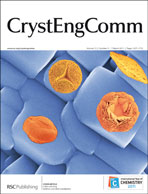Heteroepitaxial orientation control of YSZ thin films by selective growth on SrO-, TiO2-terminated SrTiO3 crystal surfaces
Abstract
Epitaxial integration of dissimilar materials with a large mismatch and different crystalline structures is of increasing interest to generate heterostructures with new or enhanced functional properties. In this study,


 Please wait while we load your content...
Please wait while we load your content...